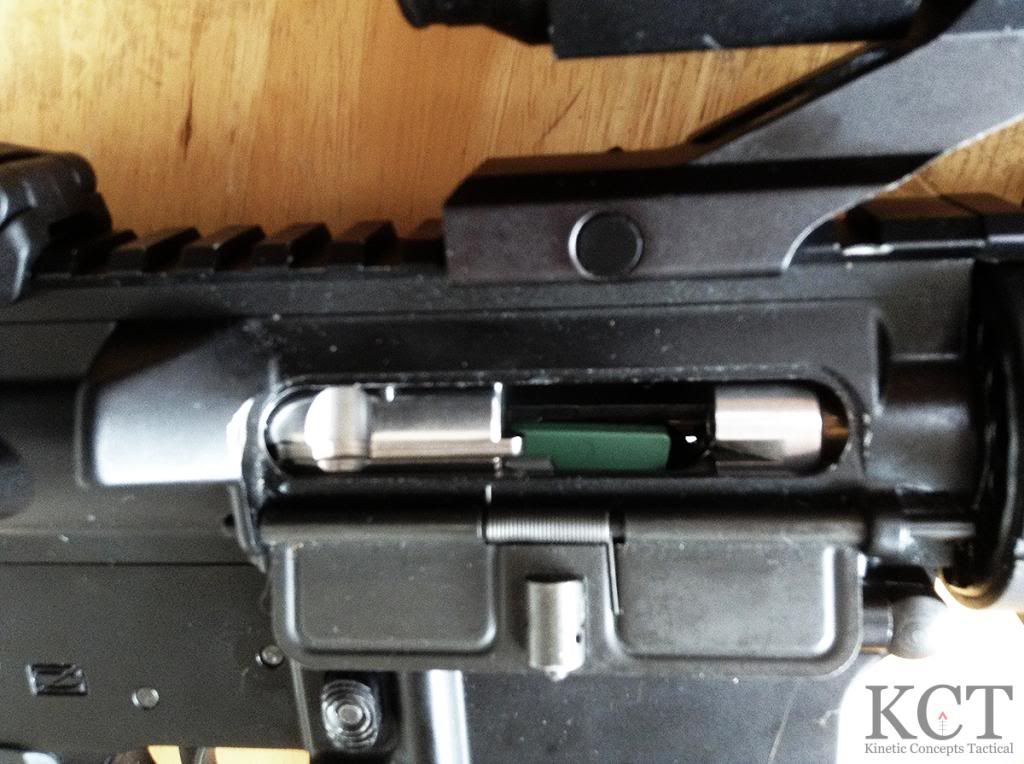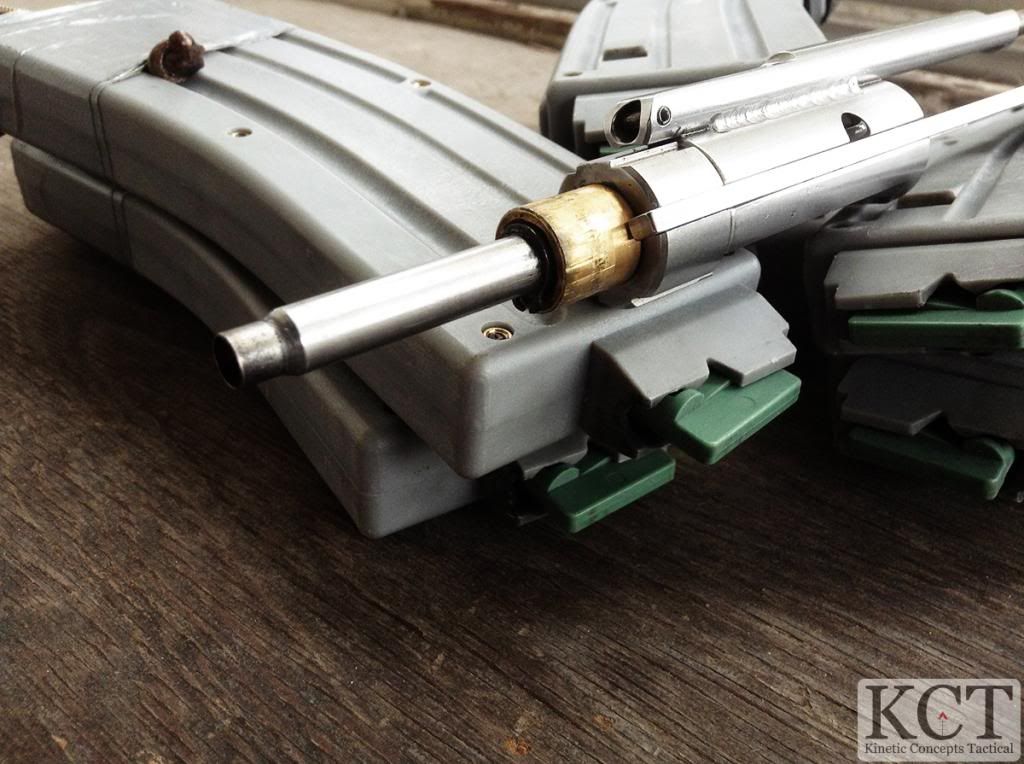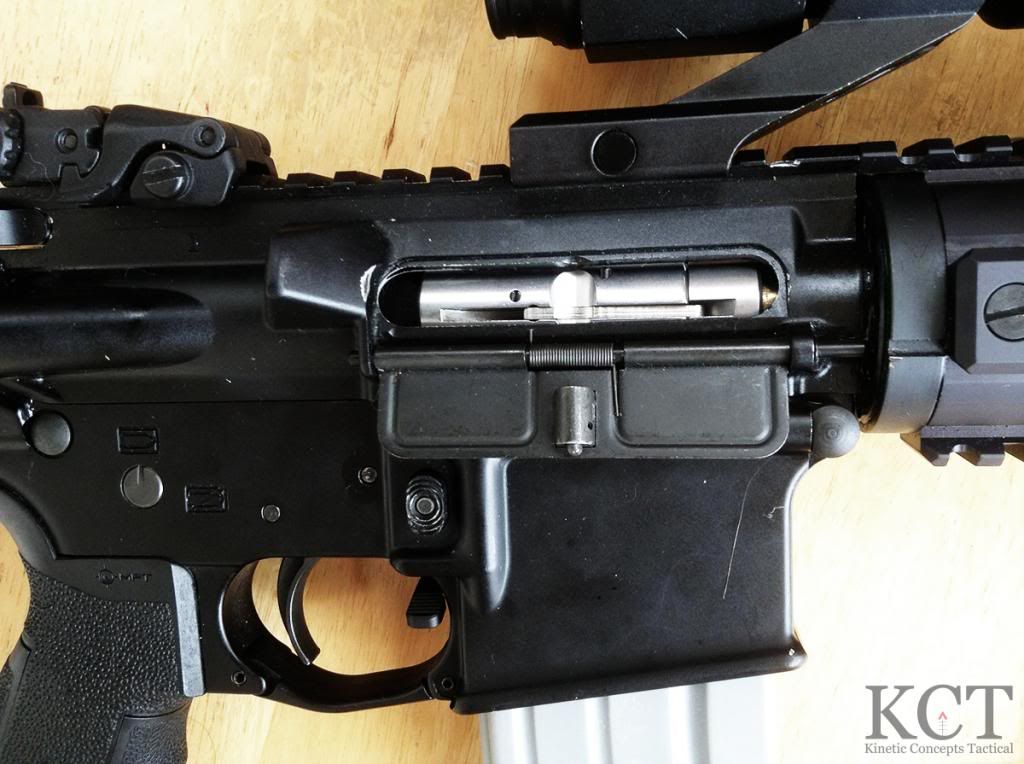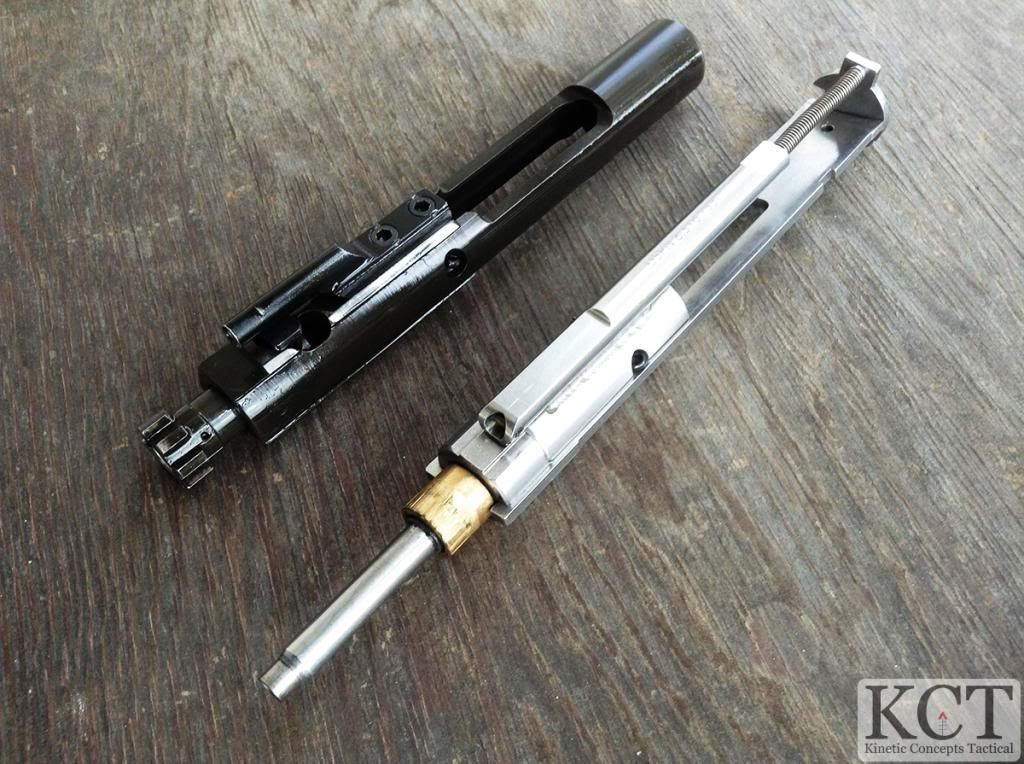Train like you fight. If you wouldn't do so,etching in a fight, don't do it in training. If your AR is a 9lb hunk of metal and your training rifle is a 4lb .22, what are you not doing? You're not running a gun like your fighting gun.
If you want to convert your AR into a plinker, you can do that, but there are a lot better options out there if you want to throw rounds at bottles.
If you want to train, however, keep reading.
This kit has been widely discussed on the internet, and with good reason. There's hardly any good info online. Does the bolt hold open? Do the mags feed? Is it dirty? My gas tube! There's a lot out there that seems to contradict itself. We aim to dispel those contradictions here.
First, what are we going to use this for? If you want a .22 tactical style rifle, the options are your there. We've seen great things from the M&P 15-22. SIG is a popular choice. You can get SCARs and 416s now. You get it. And most of them will deliver better performance due to being optimized as a .22 from the ground up.
And here's the problem: none of those guns weigh, handle, or kick like the real thing. Sure, a .22 had nowhere near the whomp of a 5.56, so the kick is something we'll probably be stuck with, brakes aside to some degree.
For the weight, go carry a .22 rifle all day then carry your 5.56 on the same drills. Write down when you were more tired. Move on to the next step.
Ever swing a kids baseball bat then swing a real one? Try it and write down any differences you noticed.
Get the idea? So, that .22 is great for practicing fundamentals and mechanics, but it's terrible for getting your rifle to the point of muscle memory.
The CMMG does cost less. Until you figure in any other part of an AR. .22 ammo, when you can find it, is cheaper than 5.56. Period, so that's an even split both ways.
So, really, where is the value? It, like the devil, is in the details. And it's a big one. The vale lies on training with your rifle, your gear, and reactive targets like steel. Want to work on your trigger work at 10 yards? Go ahead (where permitted by the RSO). Can't find frangible rounds and bust hundreds like it's cool? Who cares? No room in the rifle bays? Whatever.
The big win for shooters is being able to get instant feedback on shots using a center fire rifle at ranges that you could normally not safely shoot at. If you go after steel with a 5.56 at 30 yards, at the very least, you're going to need new steel soon.
If you have not trained with steel, you should. It's should almost to the point of need. You will become faster, more accurate and more confident as a shooter in fewer rounds than just punching paper. You'll still want to keep paper in your training routine for accuracy and grouping, but you can do that to some extent by spray painting your steel.
We ran the Bravo kit hard. Since we can shoot .22 for a lot less than 5.56 and shoot steel at CQB distances, we were able to work the system a lot harder than most centerfire system. Each shooting session we made sure that we ran 500 rounds of mixed ammo through the kit. Federal bulk, Automatch,Winchester bulk, CCI standard velocity, Mini-Mags, Remington bulk, anything we could find, we dumped in a box and shot through the kit. After multiple 500 round sessions, we can tell you a few things.
Shots Fired
This kit does not care what ammo you run through it.
We literally took everything we could find, mixed it up in a Federal bulk box, and started jamming mags and running them through the gun. The kit never hiccuped or showed a preference for any specific kind of ammo. The only failures we had were an occasional case getting caught between the bolt carrier group and the charging handle. Each time we simple dropped the magazine and rackrackrack and the casing was out. There have been maybe five of these failures in probably 2k+ rounds. We'll update as we go on with the test.
This kit is dirty.
Yep. It's a .22, so no big surprise there, but it bears mentioning. Shooting Federal unplated lead nose, the kit would have a good deal of leading within 300 rounds. Easy to clean if you bring a .22 brush or bore snake out with you, but a pain if you don't. The leading on unplated ammo is so bad that we've had the kit lose zero within those 300 rounds. As in incapable of reliably hitting a 2/3 size steel torso target at 30 yards. And by reliably we mean maybe 1 out of 8 shots made contact with the plate. Copper plated and washed ammo seems to yield consistent results with less fouling. Again, a simple scrub with a .22 brush in the interior of the chamber of the kit takes care of it, but it is something to consider if you shoot unplated lead ammo. Speaking of this, the vertical surfaces of the PWS FSC 556 muzzle brake were also coated with lead and carbon with this ammo. Standard muzzle devices are relatively unaffected, but anything with a surface perpendicular to the bore axis are going to need some cleaning. We tested the kit with standard birdcage flash hiders and a SEI Vortex and there was no more crud than firing 5.56 through the rifle.
My gas tube!
So far, so good. No issues. As in there's been zip, zero, none. Now, to be fair, at KCT we recommend cleaning your gas tube regularly by running hot gasses through it at several thousand PSI. After every session, both the 16" carbine and 20" rifle systems had their gas tubes cleaned by 5+ rounds of 5.56 propellant, and work flawlessly with no further maintenance to the gas tube.
Magazines?
The gray mags with the green followers are pretty common, and readily available from several retailers and online stores. These mags are interesting in a few aspects.
- They are heavy. A bit lighter than a loaded 5.56 mag, but much heavier than a dedicated .22 mag. So, this is going to be a plus for training. Less of a plus if you just want to plink.
- They are not (very) drop free. They fit our test magwells without needing to be sanded (CMMG, PSA, S&W M&P, DD), but they don't drop free without a bit of force. If you roll the gun to eject the mag, you're really going to need to snap the weapon side to side to get these out. If you sweep your mags out of the gun on the way back while going for a fresh one, this will be nothing new to you.
- They don't like being fully loaded the first few times. You'll know what we mean, but around 15-18 rounds you'll feel a lot of resistance, like the spring is being compressed in chewing gum. Stop at this point, go shoot, come back, and load up as needed. The spring will settle in, but it will take a while.
- They do not activate the Bolt Hold Open Actuator (BHOA).
The BHOA is CMMG's upgrade to the kit to stop the bolt on an empty magazine. The magazine's follower pushes up on the BHOA and stops the bolt from going forward on an empty mag. The CMMG bolt is open on an empty magazine, but it does not lock back, and drops when you remove an empty mag. This is one of the reasons that the mags do not drop free. The BHOA is designed to alleviate this issue. However, the gray mags with the green followers does not activate the BHOA.
With the BHOA installed, the user can lock back the bolt by pressing the bottom of the bolt release as normal. In combination with a BAD Lever or similar device, it makes it easy for the user to lock the bolt open, which is nice for showing clear on a range or for reloading, but it does not truly mimic the AR's bolt without a BHOA compatible follower. To this date, we have not tested one of the newer CMMG magazines to analyze the proper function of this device.
 | |
| The bolt stops on the magazine follower, but will drop when the mag is removed. |
 |
| BHOA installed, bolt manually locked to the rear. |
Accuracy
The kit in 1/9 16" and 20" barrels has proven accurate enough for minute of bad-guy (torso sized targets) within 30 yards. We have not conducted further distance shooting at this time. We will put pics up of groups on paper soon.
So far, the kit has provided an excellent alternative to centerfire rifle practice. Being able to shoot steel and work at indoor ranges has proven invaluable as a training system. This system certainly outperforms dedicated .22 rifles based on the fact that you can use your actual rifle and trigger group alone.
We will be updating as we work this kit over further, but so far, we give this kit high marks for anyone looking to incorporate more practice in their range time. And that should be all of you.
Stay safe, and train hard.
Kinetic Concepts Tactical




No comments:
Post a Comment